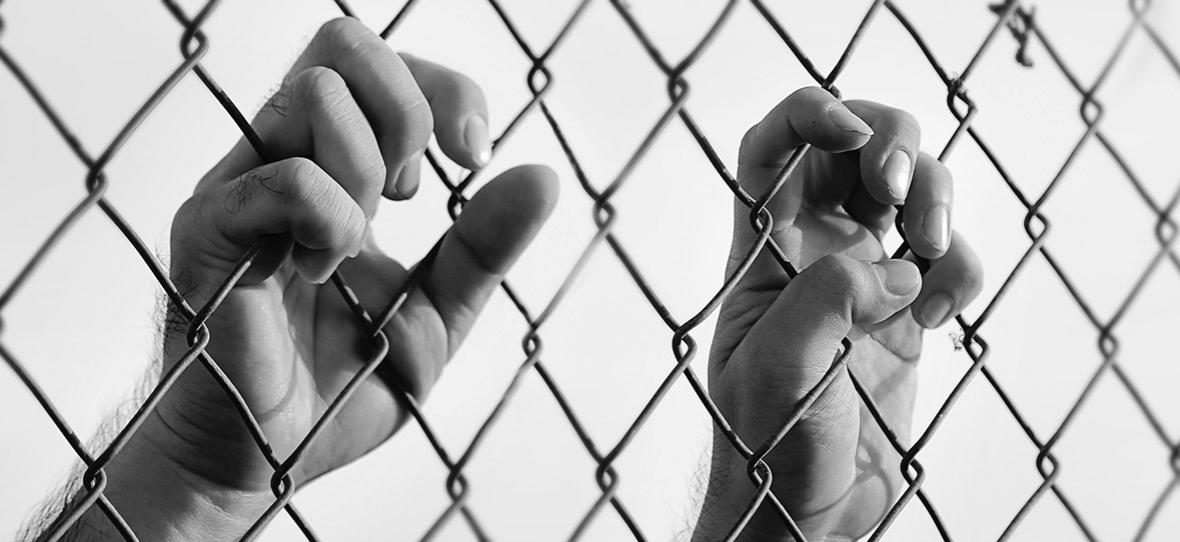- 13.0
- 26.4
- 39.5
- 50.2
The use of pre-crime preventative detention in the United States is nearly invisible to the public. Few people know these laws exist. Even prominent members of the legal community have expressed shock when told of this practice of post-sentence confinement under the pretense of “civil” law for what they might do in the future.
Advocates have described these facilities as black sites, gulags, and “not-a-prison” prisons. Some legal scholars have likened them to a domestic Guantánamo Bay. We think of them as shadow prisons — quasi- secrets carceral institutions that warehouse people in concrete cages under a “shadow legal system” beyond the traditional protections of the criminal law.
Proponents of these systems — and their profiteers, have their interest in concealing them. These laws have been repudiated as a “flagrant denial” of human rights, and “misuse of psychiatry.” These legislative schemes are incredibly expensive placing enormous strain on already – overburdened state budgets. And there is no evidence that they work:
States with these laws do not have lower rates of recidivism then the thirty states who have invested in primary prevention strategies instead. There is little chance of public outrage dismantling these laws, convertually no one knows these laws exist.
Just Future Project is dedicated to bringing light to shadow prisons. We believe that in order to change these systems we must first make them visible. In service of the goal of transparency we have created this map of the 20 state systems of pre-crime preventative detention.
The thirty states without a so-called “sex offender civil commitment” scheme appear in blue. The twenty states with a shadow prison are displayed in a shade in pink corresponding to the per capita rate of commitment, with darker shades representing a higher concentration. The broad range of state commitment rates illustrates both the state’s reviance on or investments in these systems, as well as the degree to which the “sexual violent predator” label and the implementation of involuntary commitments is a subjective decision. A person who might spend the rest of his life involuntarily committed in one state might never have been considered for commitment in another state.
We also indicate facilities with a geo-location marker on each state with an active program. Most states have a singular facility. However, Minnesota, Missouri, Nebraska, and New York each have two facilities. While New Hampshire currently has a single person living in the community on “conditional release,” there is currently no one committed to custody. We also include a geo-location marker for FCI Butner in Butner, NC with details about the federal program for post-sentence “civil” confinement housed there. Each Pre-crime state displays an information menu when selected that includes key facts about that specific state system: the name (or title) of the law, the relevant code section, the number of those committed, detained, conditionally released, and fully (unconditionally) released.
[perfectpullquote align=”right” bordertop=”false” cite=”” link=”” color=”” class=”” size=””] What is a choropleth map? NOUN
A map which uses differences in shading, colouring, or the placing of symbols within predefined areas to indicate the average values of a particular quantity in those areas.
Definitions from Oxford Languages[/perfectpullquote]
For the purpose of this map, we are using the following definitions:
- committed: held in state custody in a carceral setting based on the authority of a formal legal finding that the person meets the criteria for pre-crime preventative detention.
- detained: held in state custody in a carceral setting past the completion of their sentence, but not yet formally found to meet the criteria for pre-crime preventative detention.
- conditional released: those permitted to live in the community under supervision (replicating the conditions of ultra supervised probation or parole) who remain under state control because they are labeled as meeting the statutory criteria for pre-crime preventative detention.
- fully released: those completely released from state control because they have been formally found to no longer meet the statutory criteria.
The data used for the number of persons impacted by these systems comes from the Sex Offender Civil Commitment Programs Network (SOCCPN) 2018 Annual Survey. It is the same data relied on by Prison Policy Initiative for their “Mass Incarceration: The Whole Pie 2019.”
While we continue to believe this data is deeply problematic, it is currently the best information available on the size of the Shadow Prison system in the United States.
Cumulatively, based on the 2018 SOCCPN data, there were approximately 6,559 persons behind bars under these laws, with a total of 1,013 detained and 5,546 committed.




